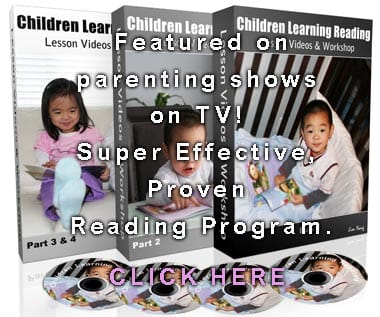Empowering Young Minds: Effective Strategies for Teaching Reading to Children at Home or in School
Empowering young minds is a vital element of education. Teaching reading to children, especially at home or in school, is one of the most important ways to ensure that young minds are empowered and ready for the challenges and opportunities of the future. Reading is an essential skill that all children need to learn in order to make the most of their educational journey.
In this article, we will discuss effective strategies for teaching reading to children at home or in school. We will look at the importance of investing in quality reading materials, creating a positive reading environment, and using effective instructional strategies to ensure that children are empowered to become life-long readers. With these strategies, teachers and parents can help children hone their reading skills and become successful in school and beyond.

How to Reach Struggling Readers: Strategies for Empowering Young Minds
![]()
When it comes to helping struggling readers, it’s important to remember that every child is different and has their own unique needs. However, there are some key strategies that can help empower young minds and help them develop strong reading skills. Here are a few tips to help you support your struggling reader:
- 1. Make Reading Fun: Reading should be an enjoyable experience. Try to make it a fun activity by creating a cozy reading space in your home or at school. Let your young reader pick books that are of interest to them and make sure the material is age-appropriate. Incorporating games, puzzles, and other activities into the reading experience can help make it more engaging.
- 2. Build Foundational Skills: Make sure your young reader has a strong foundation in basic literacy skills. This includes helping them to understand the alphabet, letter sounds, and phonics. Provide opportunities to practice these skills in a fun way.
- 3. Provide Support: It’s important to provide support and encouragement to your struggling reader. Build their confidence by praising their efforts and breaking down tasks into manageable chunks. Make sure they know that they can come to you for help when needed.
- 4. Set Goals: Setting goals can be helpful in motivating struggling readers. Work together to set achievable goals and create a plan for reaching them. Celebrate successes along the way.
- 5. Get Professional Help: If you feel your child is in need of more specialized help, don’t hesitate to reach out to a professional. A reading specialist or tutor can provide additional support and guidance.
By utilizing these strategies, you can help empower and encourage your struggling reader to reach their full potential. With your support and guidance, they can become confident and successful readers.
Overcoming the Language Barrier: Tips for Teaching English As a Second Language
![]()
As an English teacher, you know that teaching a language can be a difficult and rewarding experience. For students learning English as a second language, the challenge can be even greater. But with the right strategies and techniques, you can help your students overcome the language barrier and become more proficient in English.
Here are some tips for teaching English as a second language:
- 1. Create a Positive Learning Environment: Creating a positive and supportive learning environment is key to helping students learn a new language. Make sure your classroom is welcoming and encourages students to ask questions and take risks.
- 2. Focus on Communication: Focus on helping your students learn to communicate in English. This means teaching them how to construct sentences, use proper grammar, and understand the nuances of the language.
- 3. Use Visuals and Real-Life Examples: Use visuals, such as flashcards and diagrams, to help your students understand and remember new words and concepts. Whenever possible, use real-life examples to make the material more relatable and easier to understand.
- 4. Encourage Practical Application: Encourage your students to use their new language skills in practical ways. Have them practice speaking in pairs or small groups. You can also assign them projects or tasks that require them to use the language.
- 5. Celebrate Success: Celebrate your students’ successes and encourage them to keep trying. Recognize their efforts and praise them for their progress.
By following these tips, you can help your students overcome the language barrier and become more proficient in English. With patience and dedication, your students can gain the confidence and skills they need to succeed in their language learning journey.
The Power of Positive Reinforcement: How to Encourage Young Learners
![]()
Positive reinforcement is an important tool for encouraging young learners to develop a lifelong love of learning. Research has shown that when children are given positive reinforcement for their accomplishments, they are more likely to be motivated to continue learning, stay engaged, and strive for excellence.
At its core, positive reinforcement is about providing recognition and rewards when a child achieves something, regardless of the size of the accomplishment. This type of reinforcement can help children build self-esteem and foster a sense of accomplishment.
When it comes to young learners, here are a few tips for using positive reinforcement effectively:
- 1. Focus on the Behavior, Not the Outcome: It’s important to remember that positive reinforcement should be used to reward a child’s effort and not the outcome of the task. For example, if a child is learning to read, focus on praising their progress rather than whether or not they can read a certain page.
- 2. Use Specific Language: Vague praise can be less effective than specific language that focuses on the child’s efforts. For example, instead of saying “good job” for completing a task, say “you worked really hard and that paid off!”
- 3. Offer Immediate Reinforcement: It’s important to provide immediate reinforcement for a child’s efforts, as this will make the reward more meaningful.
- 4. Be Creative: Positive reinforcement doesn’t have to be limited to verbal rewards. You can also offer rewards such as stickers, points, or treats to reinforce positive behavior.
- 5. Make it Fun: Whether it’s a game or a reward system, make sure that you make learning fun for young learners.
By using positive reinforcement, you can help encourage young learners to develop a love of learning and foster a growth mindset. With a little creativity and a few rewards, you can help your child become a successful and engaged learner.
Connecting the Dots: Making Connections Between Reading and Life Skills
![]()
When it comes to teaching students, connecting reading with life skills is a great way to make learning both more meaningful and engaging. Reading is a fundamental skill that helps us make sense of the world around us. By connecting it to life skills, we can help students think critically about how the skills they learn while reading can be applied to their everyday lives.
One of the most important life skills that can be connected to reading is problem solving. As students read, they can learn to identify and analyze problems, come up with possible solutions, and evaluate the consequences of each option. By applying this same process to everyday problems, students can learn to make more informed decisions and develop problem-solving strategies that will serve them well in the future.
Another life skill that can be connected to reading is communication. As students read and discuss their thoughts with others, they can learn valuable communication skills such as how to express their ideas clearly and how to listen to and understand the perspectives of others. These skills can then be applied in real-life conversations, allowing students to better understand their peers and engage in meaningful dialogue.
Finally, reading can help students develop their critical thinking skills. As they read, they can learn to make connections between different ideas and draw conclusions based on evidence. Applying these skills to everyday situations can help them make more informed decisions and become better problem solvers.
By connecting reading to life skills, we can help students develop the skills they need to be successful in the future. Not only will this make learning more meaningful and engaging, but it will also give them the tools they need to thrive in their personal and professional lives.
Increasing Literacy Through Technology: Exploring Digital Resources for Teaching Reading
![]()
The digital revolution has had a profound impact on the way we learn and teach. With the rise of technology, educators have access to more resources than ever before to help students become better readers and writers. This blog post will explore the potential of digital resources to increase literacy in the classroom and provide students with the tools they need to become proficient readers and writers.
One of the most beneficial digital resources for increasing literacy is the use of online reading and writing activities. These activities can be tailored to the individual student’s needs and help to improve their reading comprehension and writing skills. By providing engaging and interactive activities, students are more likely to become engaged in the learning process and retain more information. Many online activities also allow for collaboration with peers, allowing students to practice their reading and writing skills in real-time with their peers.
Another way that technology can be used to increase literacy is through the use of digital textbooks. Digital textbooks are easier to use than traditional textbooks and can be accessed on a variety of devices. Digital textbooks provide students with a wealth of information on the topics they are studying and can also provide interactive activities that help to reinforce the material. Additionally, digital textbooks can be shared with other students or used as a reference for future classes.
Finally, digital resources can also be used to help students develop their writing skills. By using online tools such as word processors, students can create documents with the guidance of an instructor. This gives students the opportunity to practice their writing skills in a safe and supportive environment. Additionally, online tools can help students with the editing process, giving them the opportunity to refine their work and improve their writing.
Overall, digital resources can be a powerful tool for increasing literacy in the classroom. By providing students with access to interactive activities, digital textbooks, and writing tools, educators can give students the tools they need to become better readers and writers. With the right resources, students can develop the skills they need to become proficient writers and readers.
Unleashing Creativity: Fun and Engaging Activities to Promote Reading Comprehension
![]()
Reading comprehension is an essential skill that all students need to learn. Without the ability to comprehend what they read, students won’t be able to gain a full understanding of the material. That’s why it’s important to find engaging activities to promote reading comprehension.
Here are some fun and creative activities that can help students develop their reading comprehension skills:
- 1. Create a Storyboard: Have the students create a storyboard based on a passage they’ve read. They can illustrate the story by drawing images or writing key words and phrases. This activity encourages students to think critically and make connections between the text and their own understanding of the story.
- 2. Create a Comic Strip: Ask the students to create a comic strip that illustrates the main points of a passage. This activity encourages students to think about the key plot points and characters in the story.
- 3. Write a Play: Have the students write a play that retells a passage they’ve read. This activity encourages students to think critically about the characters, plot, and themes of the story.
- 4. Make a Timeline: Ask the students to create a timeline of the events in a story. This activity encourages students to think critically about the sequence of events and draw connections between characters and events.
- 5. Design a Puzzle: Have the students design a crossword puzzle or word search based on a passage they’ve read. This activity encourages students to think critically about the words and phrases in the passage and make connections between them.
These fun and creative activities are a great way to engage students and promote reading comprehension. By encouraging students to think critically and make connections between the text and their own understanding of the story, these activities can help them gain a deeper understanding of the material.
Frequently Asked Questions
![]()
1. What is the most effective strategy for teaching reading to young children?
The most effective strategy for teaching reading to young children is to use a combination of explicit instruction, guided reading, and independent practice. Explicit instruction involves direct teaching of reading skills such as phonemic awareness, decoding, and comprehension. Guided reading involves the teacher providing support and prompting to help students understand what they’re reading. Independent practice involves providing opportunities for students to read and practice independently.
2. How can I help my child develop a love of reading?
Encouraging your child to read should be a top priority. Start by reading to your child every day and making sure they have access to a variety of books. Help them find books that interest them and make reading a fun and exciting activity. Talk to them about the books they’re reading and ask them questions to help them think critically. Finally, model a love of reading by reading yourself and discussing books with them.
3. What are some strategies for teaching reading to children with learning disabilities?
When teaching reading to children with learning disabilities, it is important to create a supportive and encouraging learning environment. Use explicit instruction to teach specific reading skills and provide scaffolding to help them understand difficult concepts. Provide multiple opportunities for practice and review so they can become more comfortable with the material. Finally, use accommodations such as extended time or audio recordings to help them keep up with their peers.
4. What tips can I use to help my child become a more engaged reader?
Provide interesting and engaging books that motivate your child to read. Ask questions to engage their critical thinking skills and encourage them to make connections to their own life experiences. Make sure they have access to a variety of materials such as magazines, newspapers, and online articles. Lastly, celebrate their successes and give them positive feedback to help them stay motivated.
5. How can I make sure my child is able to comprehend what they are reading?
When teaching comprehension skills, it is important to start by teaching the basics such as making predictions, visualizing, and summarizing. Then, provide opportunities for practice and review and ask questions to help them analyze and synthesize the material. Finally, provide feedback to help them understand what they’ve read and how they can improve their comprehension skills.
6. What tips can I use to encourage my child to read more?
First, make sure your child has access to a variety of books that are interesting and engaging. Create a comfortable and quiet space for reading and provide incentives such as rewards for reaching certain reading goals. Talk to your child about the books they’re reading and ask them questions to help them think critically. Lastly, model a love of reading by reading yourself and discussing books with them.
Conclusion
![]()
Empowering young minds is essential for the success of our children’s future. Reading is an invaluable skill that can open up a wealth of opportunities for children. Effective strategies for teaching reading to children at home or in school can help ensure that young minds are equipped with the tools they need to succeed. Through engaging activities, increased exposure to reading materials, and practice, children can gain the confidence and motivation they need to become proficient readers. With the right guidance and support, children can unlock their potential and reach their literacy goals.



